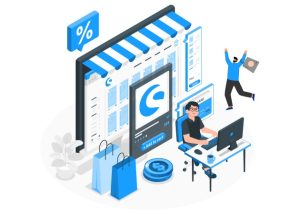How to Build a Scalable Mobile App: A Comprehensive Guide

Do you own a business and wish to take it to the next level using mobile technology? The solution therefore is to develop a mobile app that is flexible and can expand as your business expands. But the process of building a scalable mobile app may seem to be very challenging and even overwhelming. Starting from the selection of a competent software development company to guaranteeing the application’s security and functionality, business owners have many challenges.
But worry not, this is a step by step guide to help you know the process and develop a successful and sustainable mobile app for your business. Well, let’s get started and consider the concept of the scalable mobile apps and what it is all about.
 Understanding Scalability in Mobile Apps
Understanding Scalability in Mobile Apps
When we discuss making a mobile app scalable, what we are really concerned about is how the growth process can be easily managed. Scalability is the ability of the app to accommodate a larger number of users, handle more data, and perform more transactions without any hitches. It is as if you are making sure that whether you have ten people or one hundred people coming to your party you have enough room, food and games. This ability is essential because as the business expands, your application will serve more users and their actions at the same efficiency and with the same level of quality.
Scalability is another factor that should be considered when developing an app so that the app can expand as the company expands. This saves you from future complications that would have been worse if changes were to be made at this stage since they are more complex and costly. Therefore, when designing your mobile app, consider it as planning a party that everyone would wish to be part of now and in the future.
Planning Your App for Scalability
It is important to note that planning the mobile app before you begin developing it will go a long way in helping you. This step can be thought of as similar to planning out a route before a road trip. You have to have a vision of where you want to be and what you are likely to face in the process.
- First of all, it is necessary to determine the objectives of the application. What need is it fulfilling for your users? Who are those users, and how do you envision them using your app?
- Next, think about which of the features your app should have in order to achieve these goals and be useful for the users. It is like loading all the belongings you will require in a car trip and ensuring that none of the important items are left behind.
- You should also look at the future. What if you have twice the number of users? What if you want to add more features based on feedback from the users?
Anticipating such possibilities now ensures that you are not unprepared in the future. When you plan for scalability during the planning phase, you are preparing your application for a ride and growth and change without hitches.
Choosing the Right Technology Stack
Selecting the right tools and technology for your mobile app is like selecting the right ingredients for a recipe. If properly selected, your app will be able to develop and function stably even with the increased usage by the audience. One has to research and choose technologies that are reputed to be good for handling growth scenarios. This means considering the programming languages, frameworks and tools that can handle many users, large amounts of data and at the same time be efficient.
Implementing Scalable App Features
Incorporating features that can be expanded is like having the right tools as a carpenter; it ensures that your app is efficient now and will become even more efficient when there is more work to be done.
- Consider the cloud services that allow your app to store data in the cloud rather than packing everything into the phone. This is somewhat like having your songs stored in the cloud, so that you can listen to them anytime but not occupy the storage space on the device.
- Another useful function is caching. This is the technique where the data that is most often used is stored in the cache so that the application does not have to retrieve it repeatedly.
- There is also the need to match the load properly. It partitions the work your app does so that no server is overloaded with requests from users of your app.
- Database optimization ensures that your app is in a position to locate and manipulate data that is relevant to it. It’s like storing your clothes so that you can easily find your shoes and not have to rummage through a heap on the floor.
With these scalable features integrated into your app by a top mobile app development company in Dallas, it means that your app is capable of handling more users and more data without any hitches or slow downs.
Testing for Scalability
To identify any problems that may arise to hinder the progress of your app when it begins to receive more traffic, you will need to perform several types of tests. These tests include load testing where you put many users through the app to see how the app handles it. Stress testing is a process that tries to take an application to its extreme to see the limit. Load testing is used to determine whether the app performs well and is not slow to load when a number of users are accessing it. These tests will help you identify and solve any issues, and your app can expand as planned, without any issues. This step is rather necessary to ensure that everyone who is using your site or application will have a great time no matter how many people are using it.
Launching and Scaling Your App
Once you have designed and built the app and tested it, it is now ready to be launched to the user. When your app is live, ensure that you monitor how it is doing. Pay attention to the comments users leave and use statistics to observe their behavior within the application. It is quite encouraging to learn that this information is like a goldmine. It informs you of the strengths and areas that require enhancement in order to achieve the intended goal. This stage should be considered as a continuous process rather than a one-time activity.
Conclusion
Creating a mobile application that evolves with your business does not have to be a complicated process. In this way, you lay the foundation for an app that not only addresses your business’s current requirements, but which is also designed for further development in the future. Have a clear strategy at the beginning, choose a top mobile app development company in Los Angeles, select the proper instruments, draw with extensibility in mind, and incorporate the features that are extensible. Do not neglect the testing feature to be sure that your application is capable of working in conditions of high activity. After the launch of your app, monitor how people are using it and be prepared to change things up if needed. This way of constant monitoring and updating will ensure that your app remains useful and optimally functional as your business grows. Essentially, when it comes to building a mobile app, it is all about readiness for success; readiness to ensure that your online presence is as expandable and elastic as your business venture.






